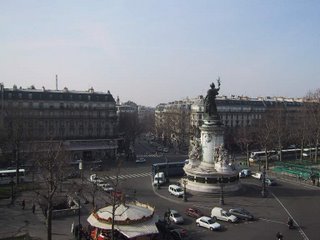
Beckett fact no. 69.
Ten streets, addresses and landmarks in Beckett.
1) Martin Ignatius MacKenzie, author of The Chartered Accountant’s Saturday Night, and correspondent of Dum Spiro, gives his address in Watt as ‘Lourdes, Basses-Pyrénées, France.’ An Irish politician once tabled a motion that travel from Ireland to Lourdes be reclassified as domestic and hence should not require a passport.
2) The Rue d’Assas in Text for Nothing XI, with its ‘two-stander urinal… with the leak making the same gurgle as sixty years ago’ (la vespasienne à deux places rue Guynemer in the French).
3) In More Pricks Than Kicks Mr and Mrs Olaf bboggs request ‘the pleasure of Walter Draffin’s company’ at their daughter Thelma’s marriage to Belacqua in the church of St Tamar, Glasnevin, with a reception to follow at 55 North Great George’s Street, a short step and jump from the Joycean institution of Belvedere College and the Gate Theatre, where there’s bound to be a Beckett play on sooner or later if you wait around long enough. Krapp’s Last Tape was originally set in North Great George’s Street.
4) Another stop on the Texts for Nothing Paris walking tour is ‘Place de la République’ (text eight) ‘at pernod time’, not far from the ‘noble bassamento of the United Stores’ (Magasins Réunis) beneath the ferrule of the stroller’s cane.
5) Employed as a sign outside ‘Madeleine’’s restaurant, the French Unnamable wonders if the looks he attracts mightn’t constitue a Berkeleyan proof of his existence: Tant d’égards, tant d’acharnement à me remarquer, qu’est-ce qui m’interdit d’y voir une preuve suffisante de ma présence réelle, Rue Brancion, drôle d’île…
6) Rue Brancion is in the fifteenth district, near the abbatoirs and horse butchers of whom ‘the hippophagist Ducroix’ (The Unnamable again) was one. It’s also near Rue de Vaugirard, which gives its name to a charming early French poem.
7) Since we’re on foot in Paris, why not take in the Vendôme Column too, which is ‘to the ideal perpendicular’ what ‘the words of a libretto are to the musical phrase that they particularize’ in Proust.
8) ‘Nowhere in particular on the way from A to Z. Or say for verisimilitude the Ballyogan Road. That dear old back road. Somewhere on the Ballyogan Road in lieu of nowhere in particular’ (Company). In lieu of the hellish nearby M50 will do nicely these days.
9) Murphy’s West Brompton address in English becomes the Impasse de l’Enfant Jésus in French.
10) ‘Was Youdi’s business address still 8, Acacia Square?’, Moran asks. A valiant Christian, Helene L. Baldwin, writes in Beckett’s Real Silence: ‘According to George Ferguson’s Signs and Symbols in Christian Art, the acacia is a symbol of immortality and ‘eight’ is the number of the Resurrection. If the explication seems absurd, it cannot be helped: Beckett probably laughed when he wrote it. Writing religious allegory does not, it seems, deprive one of a sense of humor.’ Another possibility, if the explication seems absurd, is that yes indeed it is.
3 comments:
55 North Great George's St is also a mere half-step and a pirouette from no 35, once the house of dancing master Denis J. Maginni (Maginnis minus the s, which he dropped in order to seem more Italian), which, almost a century later, was reincarnated as The James Joyce Centre. Maginni's appearance in Wandering Rocks is announced thus:
“Mr Denis J. Maginni, professor of dancing &c, in silk hat, slate frockcoat with silk facings, white kerchief tie, tight lavender trousers, canary gloves and pointed patent boots, walking with grave deportment…”
the dancing master's original name was Maginn..who was my granduncle. he died in No. 35 in 1915.. For reasons unknown to us so far, he recorded his name in the various census forme of the time.
grandnephew william maginn
ireland
the dancing master's original name was Maginn..who was my granduncle. he died in No. 35 in 1915.. For reasons unknown to us so far, he recorded his name in the various census forme of the time.
w. Maginn
grandnephew
Post a Comment